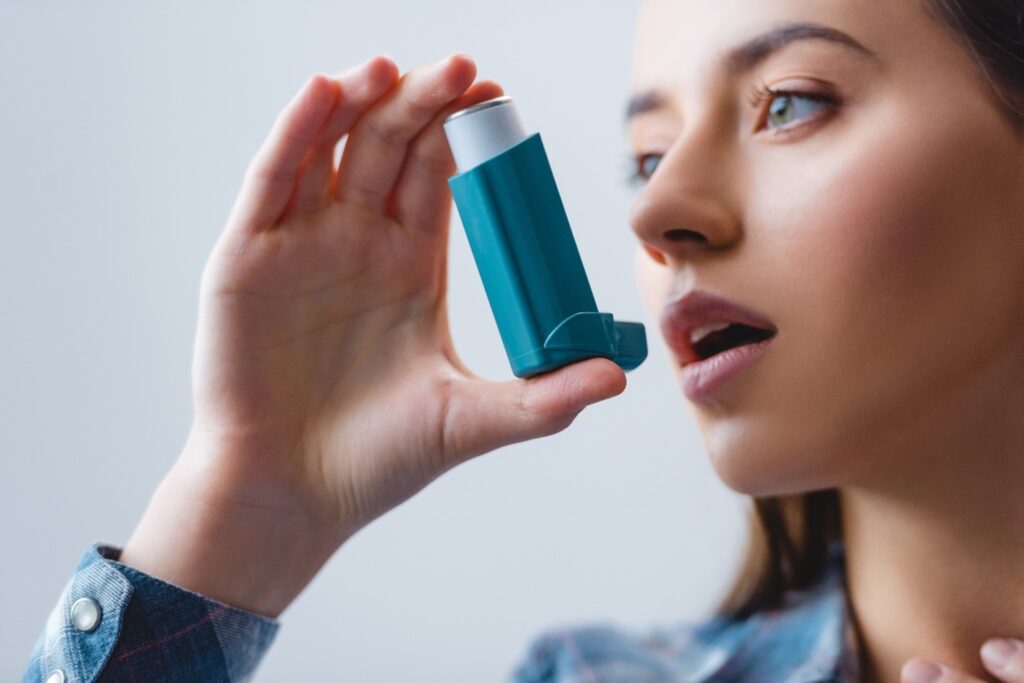The sequelae of allergies are otherwise defined as the complications and risk factors associated with allergies, and several other health issues can develop in individuals who have allergies.

In what follows, we’ll be outlining and identifying some of the most common sequelae of allergies. We’ll discuss some of their chief characteristics, and we’ll explore the most common and effective treatments available for these conditions.
Complications and Risk Factors of Allergies
As individuals experience the condition of having allergies and develop the typical symptoms, they will often have the potential to develop secondary health issues. The reason for this is related to the genetic predisposition that these individuals have. If an individual has several allergies, they have a genetic makeup that predisposes them to have a higher risk of further health issues.
Below are the most common sequelae of allergies:
Rhinitis
Identifiable from its congestive symptomatology, rhinitis is an allergic reaction causing nasal symptoms such as a runny nose. Caused primarily by inflammation, rhinitis ranges in severity, depending, of course, on the amount of exposure of the allergen and the severity of the allergy that the individual has to the particular allergen.
During the exposure, the lining of the nasal mucosa becomes noticeably irritated and swollen. The result is the continued worsening of symptoms, from a simple runny nose to mucus build-up and subsequent congestion.
Rhinitis often leads to additional sequelae, which can be as simple as mild cough to reactive airway disease depending on the individual. The symptoms of rhinitis are primarily treated through antihistamines.
Sinusitis
Sinusitis, which can sometimes be mistaken as a simple cold, is categorized as one of the most common infections in the United States and has been known to affect approximately 30 million people annually. For individuals with immune system complications, pre-existing allergies, structural blockages, or asthma, the risk greatly increases for developing sinusitis.
The three main types of sinus infections are acute, subacute, and chronic. Each type of sinusitis is defined by its severity and duration of symptoms.
The most common treatment method for mild sinusitis includes a simple decongestant or nasal spray, while in more severe cases, antibiotics may be necessary.
Reactive Airway Disease
Reactive airway disease is a controversial, tough-to-define medical condition associated with obstructed airways, overreactive bronchial tubes, and irritable symptoms involving difficulty breathing, mucus build-up, and excessive coughing.
Often confused with asthma, reactive airway disease typically occurs during or after a respiratory infection, but it also can be induced by an allergic reaction. For example, exposure to pet dander may cause the typical wheezing and shortness of breath that occurs with reactive airway disease. While avoiding the identified triggers of reactive airway disease is the best preventative measure, other treatments and management options are available.
Long-term medication in conjunction with an bronchodilator inhaler is typically required for the treatment and management of symptoms.
Asthma
According to the CDC, asthma is now categorized as a risk factor for severe complications associated with COVID-19 infection.
As a chronic inflammatory condition impacting the airways, asthma often results in episodic airflow obstruction attacks that causes significant breathing difficulty. An asthma attack can develop into an emergent condition if left untreated.

Several treatment, management, and preventative measures are available to mitigate or provide relief from symptoms altogether, including inhalers and corticosteroid medication.
Angioedema
Defined as swelling underneath the skin, angioedema is a medical condition that can develop from exposure to an allergenic trigger. Though typically not severe initially, angioedema can worsen without treatment and cause life-threatening sequelae.
Swelling from angioedema can occur nearly anywhere on the body, however, is most commonly recognizable on the hands, feet, lips, area surrounding the eyes, and even the genitals.
Depending on the extensive nature of the swelling, treatment may include intravenous epinephrine, oxygen supplementation, and antihistamines.
Treating Sequelae of Allergies
Treating allergies and sequelae of allergies, no matter the allergy or complication, tend to involve similar protocols, the most common being a prescription or over-the-counter medication. These treatments will work at various stages of the immune response such as by histamine blockade or counteracting the chemicals released during an advanced immune response cascade.
The treatment protocol required, however, depends greatly on the level of the immune response, the general health of the patient, and the symptomatology involved.
During a topical skin reaction, antihistamines and ointments; for congestive complications, nasal sprays, decongestants, and lifestyle interventions such as hydration.

If it’s an airway complication, oxygen supplementation, reduction of swelling via the use of epinephrine, and bronchodilation are some methods that are used to treat the condition. If an airway cannot be obtained by placing a breathing tube in the trachea, surgical placement of a cricothyrotomy tube may be necessary.
Final Thoughts
It’s important for those living with allergies and sequelae of allergies, no matter how mild or severe, to avoid allergic triggers and environmental irritants as much as possible.
